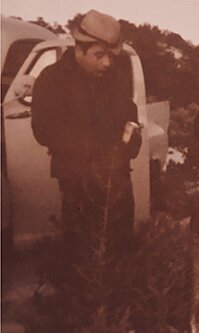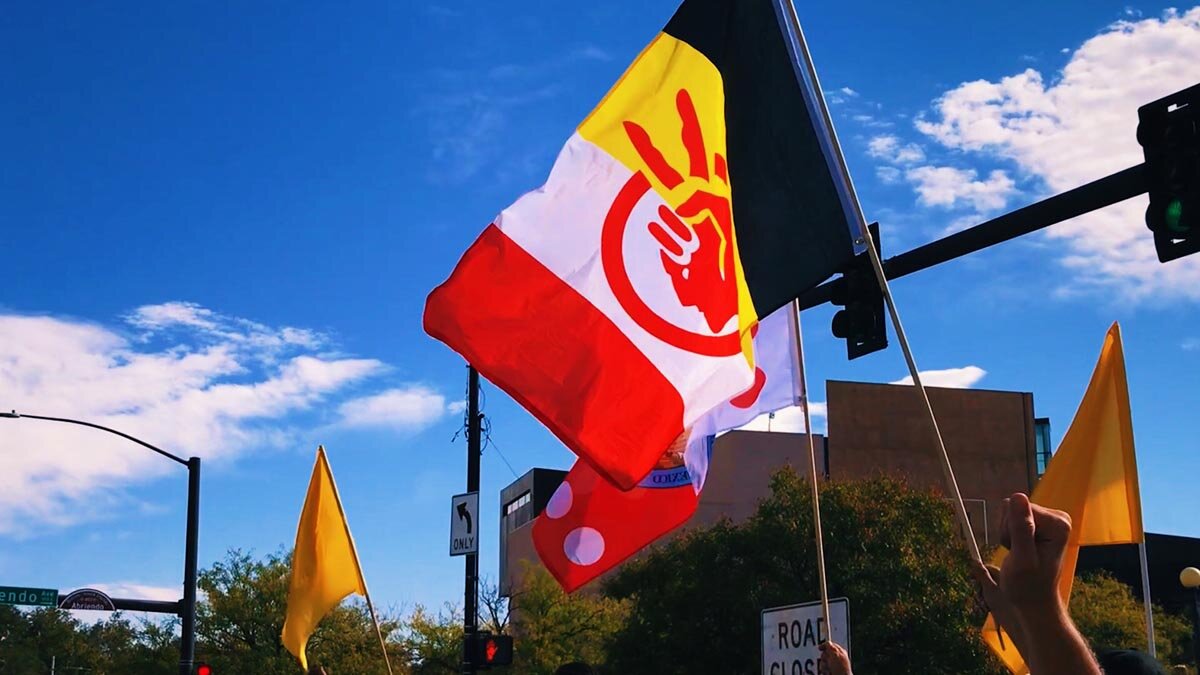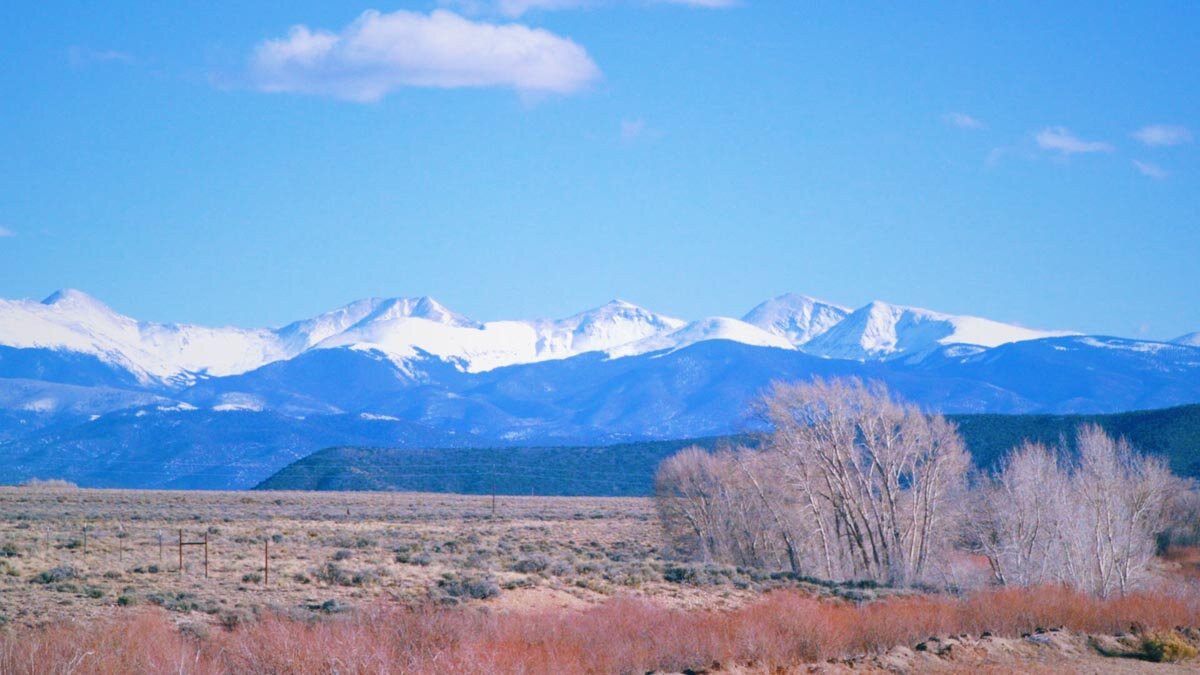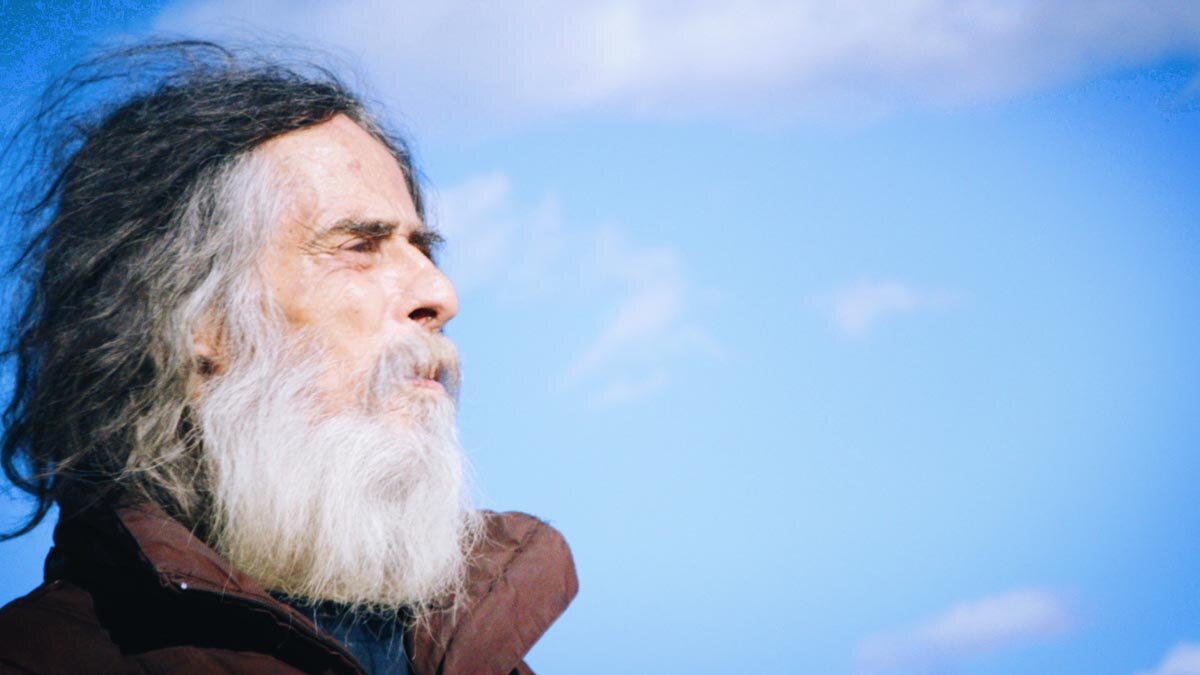Colorado pilot, medic recalls missions to Wounded Knee

The emergence of the American Indian Movement, or AIM, in the late 1960s continued a legacy of indigenous resistance as old as colonization. As part of the Native American civil rights movement, AIM presented social and political issues to the national forefront through educational campaigns, demonstrations, and sit-ins.
AIM land occupations drew attention to indigenous rights lost to and at odds with the American government. Broken treaties, cultural erasure, and sovereignty were highlighted by AIM in a 19-month occupation at Alcatraz island off the coast of northern California in 1969.
And on Feb. 27, 1973, over 200 AIM members, Oglala Lakota, and supporters occupied the town of Wounded Knee, South Dakota and declared sovereignty at the Pine Ridge Native American reservation. Together, the community led a standoff against the FBI, U.S. Marshals, and regional and tribal police in an effort to unseat a corrupt tribal government. At least two AIM tribal members died during the 71-day occupation, and one federal agent was shot and paralyzed.
Native people have fought the government in this region for generations. In 1876, Lakota Sioux and Cheyenne defeated the U.S. Army after they were attacked in Custer’s Last Stand. In 1890, after many battles, a final massacre left 150 Sioux dead at the hands of federal troops completing manifest destiny. Half were women and children.
Now, the federal government’s involvement and coercion of tribal leadership, mismanagement of tribal and natural resources, exploitation of the land and its people, and poverty, often as a result of the encroaching illegality of the subsistence way of life, were a strong impetus for the occupation at Wounded Knee.
At the age of 26, Roque Madrid, of the small village of Viejo San Acacio, Colorado, near the border of northern New Mexico, piloted food and medical supplies to Wounded Knee. A veteran, trained pilot, and medic, Madrid chartered much-needed humanitarian aid to Wounded Knee from Denver three times, using borrowed planes.

Born in Igloo, South Dakota — two hours from the town of Wounded Knee — Roque traveled to Colorado and was adopted by his grandparents at less than one month old. He grew up on the family’s subsistence ranch in Viejo San Acacio, where he still resides. Raised in a traditional Chicano culture with indigenous, Mexican, Spanish, and other European roots, Madrid helped tend to the ranch and land. His grandparents, Mexican land grant heirs, raised sheep and irrigated their alpine valley fields via a system of hand-dug ditches originating from natural streams. These acequias, community systems of irrigation built by Spanish, Mexican, and Native ancestors, pre-date the area being America. To this day they are maintained, and rely on mountain runoff from snowpack to sustain annual agricultural practices.
Though he was born in South Dakota, Madrid had not ever returned — until the day he flew a plane of supplies into the occupation.
One night, Madrid got a call from a friend. “They wanted me to serve as a paramedic at Wounded Knee,” he said. “At first, I thought it was a prank. It was one in the morning. But then I recognized that my friend was serious.”
Food and supplies going into Pine Ridge were being confiscated by law enforcement, yet the media was being told there was an overstock in an attempt to starve out the occupation and limit access to medical care. They needed help, and fast.

“I made a pot of coffee and tried to figure out how I was going to get there,” he said. “Then I called CBS.”
Madrid convinced CBS News in Denver to loan a plane to fly the food and medicine for humanitarian aid.
CBS had one condition — that Madrid give their anchor a lead on any news stories that came out of the trip.
On March 8, 1973, Madrid flew 650 pounds of food and medicine on the thirty-minute flight “from the old Stapleton airport to Pine Ridge in a single engine jet.”
“I was welcomed onto the reservation,” Madrid said. “I was assigned straight to the clinic.”
The town was comprised mainly of a post office, a trading post, and a museum — all three owned by a singular white family, who had been accused, Madrid said, of price gouging and marking up critical resources. It was just one of a long list of issues on the reservation.
At the start of the occupation, the family was escorted out, and AIM took over their home. Madrid spent the day helping to convert the house — the only facility nearby with running water — into a clinic, and tending to minor patient needs.
“We had cleared the FBI checkpoint and arrived to the village around two,” Madrid said. “We set up the clinic. Then, between seven and eight that night, the people at Wounded Knee shot a cow for meat. The feds used that as pretext that they had been fired on, and they opened gunfire on us. They shot the hell out of us. There was a big exchange of gunfire.”
In the middle of the fire exchange, “One of the guys from security came up and said, ‘I need to run a medic around the perimeter and see if any of our people have been hit.’ And I volunteered for that,” Madrid said.
They took off running down the road at top speed.
“I was running right in front of him, and saw a foxhole. Three or four more steps and I was going to dive into it. I could hear the sound of bullets hitting all around me on the ground. I knew that I was in the hail of fire. But I didn’t think I was going to get shot,” Madrid said.
“I saw the tracers coming from the machine guns in two different directions. I remember from the Marines that they fire four bullets for every tracer. The tracers were flying like sparks on an axe on a metal grinder.”
The next thing he knew, Madrid says, he was tumbling at full speed, head over heels across the dirt road. He lay on the ground, breathless.
“For a little bit of time, I thought I had tripped over a fence. Then I thought… I got hit.”
He regretted just one thing: Not telling his grandmother — his best friend, who had raised him since he was less than one month old — where he was.
“I was laying on the ground, shot. And I thought, ‘Wow. I didn’t even call my grandma and tell her where I was going,’” Madrid said. “Which I always did. I didn’t tell her where I was going in order for us to have a good conversation. I didn’t want to worry her. And I thought, well, she’s going to hear about it from the obituary column.”
Madrid couldn’t move. His friend Daniel Vigil and a third unidentified person helped him safely to the same clinic he had helped to set up earlier in the day.
“We’d had a meeting about how we’d function as a unit if we had a casualty, or more than one casualty,” Roque said. “I just didn’t think it would be me.”
When he got to the clinic, time stood still.
“I was laying on a mattress on a floor, just watching everything happen,” he said. “A medicine man sang and prayed around the whole room, over me, and over the Chief, the MD, and everyone who was there.”
“My blood pressure was dropping pretty fast. They wanted to call a cease fire to get me out of the clinic and onto a helicopter, to Rapid City or Denver. But Chief Leonard Crow Dog said, ‘No. This is my clinic. I’m going to operate.’”
Madrid recalls the Chief opened a medicine chest, retrieved some plants from a canning jar, and put them in his mouth.
“Sterile techniques, gloves and face masks, didn’t even cross my mind,” Madrid said. “Here was Chief Crow Dog, chewing something and putting it into my bullet hole. I didn’t even question it.”
Exhausted and losing blood, Madrid gave himself over to the medical team.
He remembers watching Chief Crow Dog sharpen his pocketknife on a stone, checking the sharpness periodically on his skin.
“When Chief Crow Dog cut me, I didn’t even know,” Madrid said. “There was no pain. The only time I felt pain was when the knife made contact with the bullet. But as soon as he withdrew the knife, it came and went. The pain didn’t last at all.”
He received fluids, the doctor gave him three stitches — and that was that.
“It was powerful medicine,” Roque said.

Recovering that night, Roque said media outlets stationed outside the compound tried to enter the clinic to interview him for the news.
“I said, everybody out except CBS,” he said. “I had to make good my word. Someone from ABC jumped in my face. They said, ‘Why CBS? What do you owe CBS?’ But they kicked all the media out except CBS. They got their story ahead of the rest of the people… and we were even.”
“And that was the story that went out: That federal agents had just shot an unarmed medic.”
Madrid said the situation gave him the opportunity to raise awareness about what was really happening at Wounded Knee.
“On the news, I was able to now tell the truth about our situation, and how serious the food and medical needs were,” he said. “It gave me a firsthand opportunity to talk about getting those things into the reservation. It was winter, and people were out of everything they needed for conditions like diabetes and asthma. We needed help. Being on the news helped me let the public know that the supplies had been confiscated by the police, and we had nothing.”
“Shortly thereafter, the negotiations began with the Nixon administration,” Madrid said. In the era of Watergate, their attention had been hard to hold.
Madrid escaped the compound within 56 hours, crawling on his stomach to retrieve the plane.
“The only thing that happened was I ruptured the stitches that the doctor put in. But there was no bleeding, and no infection,” he said.
Now 74, Madrid has the 48-year-old scar on his stomach to this day.
Madrid said the occupation at Wounded Knee forever changed the way he looked at law enforcement and federal involvement in tribal issues.

Raised and influenced by the Chicano and American Indian Movements, Madrid understood from his own upbringing how natural resources and land and human rights affect traditional ways of life. Attending the University of Colorado in Boulder, Madrid remembers taking a class co-taught by Corky Gonzales. The famed Chicano academic and boxer-turned-political organizer lectured each Wednesday.
“I never went to the Monday and Friday classes, because I knew the sermon by heart,” Madrid laughs. “But I made sure to be there on Wednesdays.”
At college, Madrid said he watched his whole generation wake up to the bigger picture. “And there was a lot wrong with the picture,” he said. “In the prisons and the military my people are overrepresented, but in the colleges and universities, we’re underrepresented.”
His time at Wounded Knee, he said, showed him an alternative model. “In the community at Wounded Knee, I saw people working together to try to make things better for everyone,” he said.
From Native culture being represented in the education system, to autonomy from the Department of the Interior and Bureau of Indian Affairs and honoring of treaties, “There were over three hundred points of contention held by the Pine Ridge community,” Madrid said. “The whole community would get together and work on them every night.”
“It was an intense experience. But it was also beautiful. They were some of the best, and hardest, days of my life. It was hard, cold, and often with nothing to eat,” he said. “But everyone there was going through the same thing.”
“They could break our bodies, but they could not break our spirit.”
After escaping from Wounded Knee, Madrid recovered in Denver, making two more trips to the reservation via plane before the occupation came to a close on May 8, 1973.
Roque likens his experience at Wounded Knee to his experience serving in the Vietnam War.
“Like the Vietnam War, the whole country was being lied to,” he said. “Then journalists started going over and bringing back stories. Finally, the American people were waking up to this lie that had been perpetuated for an extended period of time. Not only the country, but the world, rebelled against the United States government and its involvement in both Wounded Knee and Vietnam.”
Though the standoff gained public attention, massive and complex legal proceedings followed Wounded Knee. AIM members Dennis Banks and Russell Means were indicted, but their case was dismissed. Violence and repercussions on the reservation continued. Many members of the movement were targeted by the FBI, and in the years following Wounded Knee, over 60 opponents of the tribal government died violently. One 1975 shootout on the reservation led to the death of two federal agents. AIM leader Leonard Peltier was arrested and charged with the deaths of the agents and remains in jail at the age of 76.
Almost 50 years later, Madrid says visiting the reservation can be a heartbreaking experience. “They still have a long way to go. The quality of life, schools, and medical facilities on the reservation have not improved.”
He says it is up to the next generation to pick up the cause. “The awareness has to be passed down. The young people have to step up and take the lead — because the young people have always been the ones to step up and take the lead.”